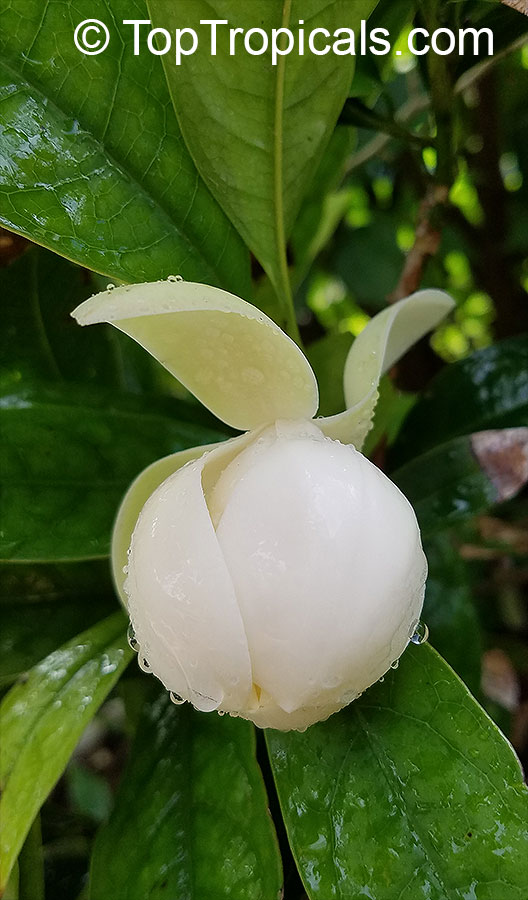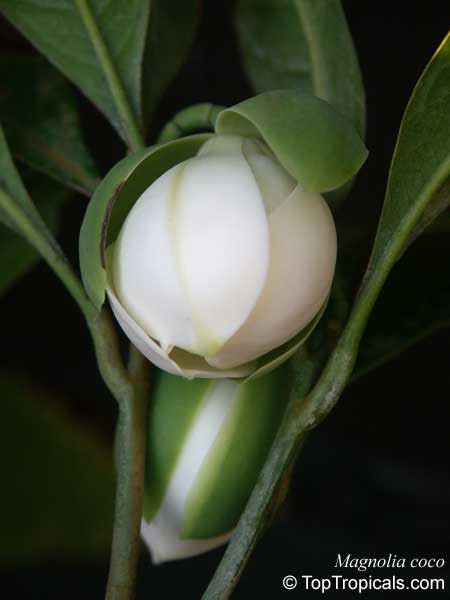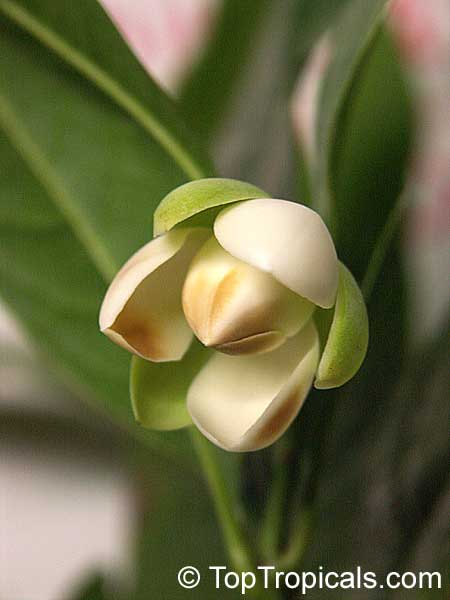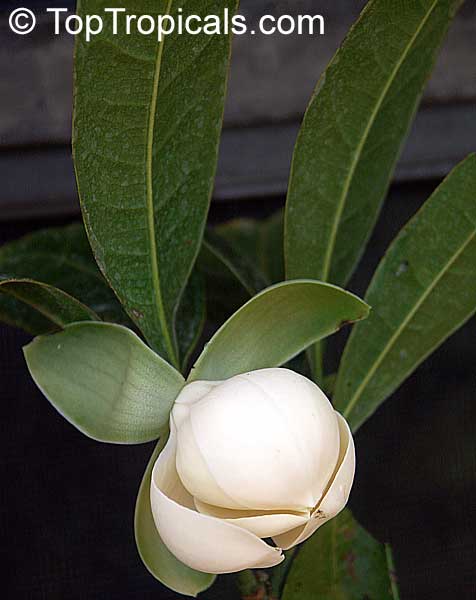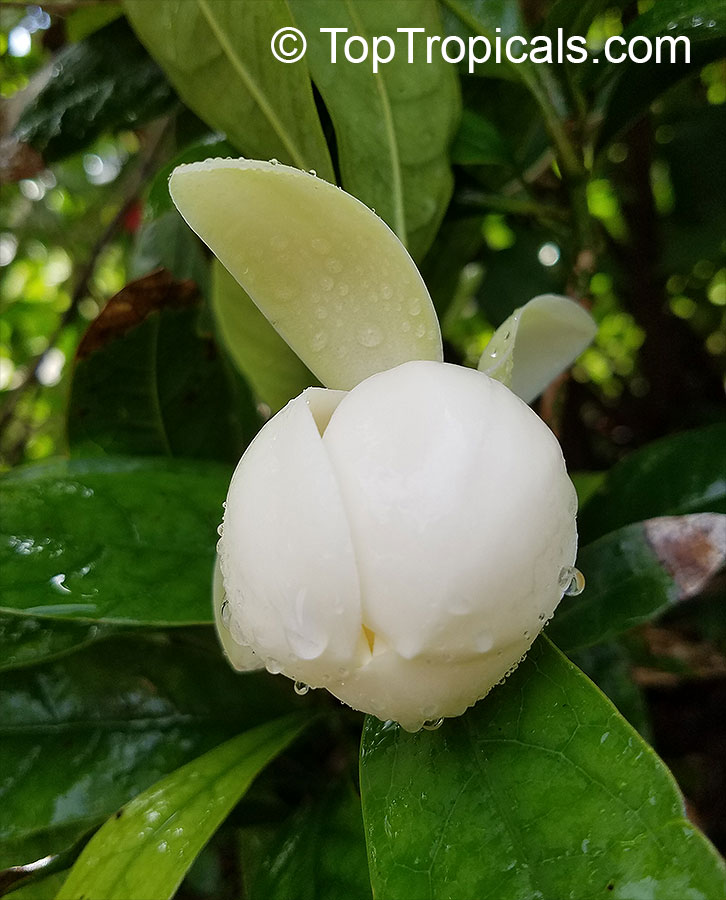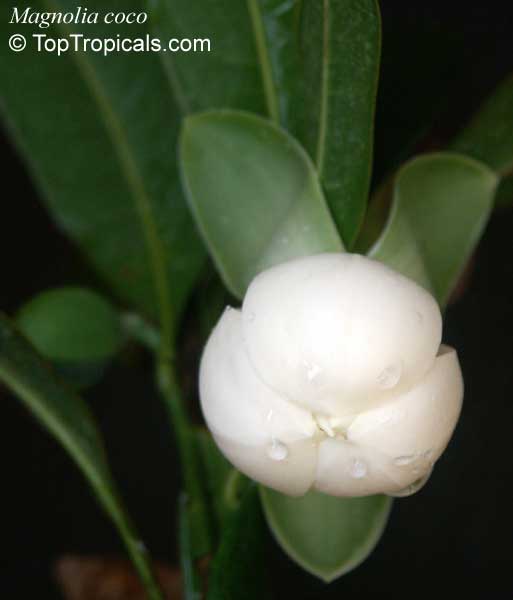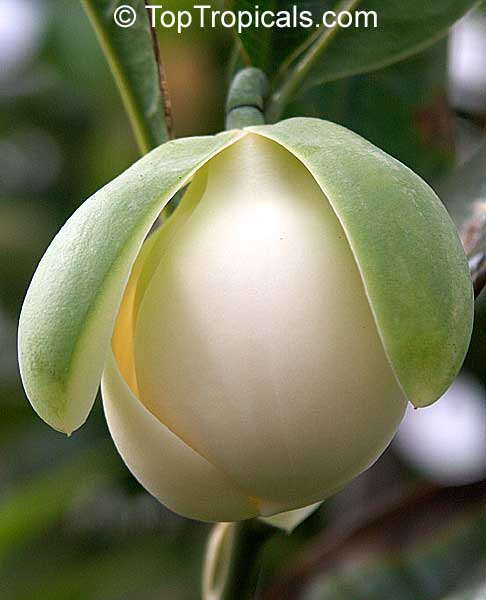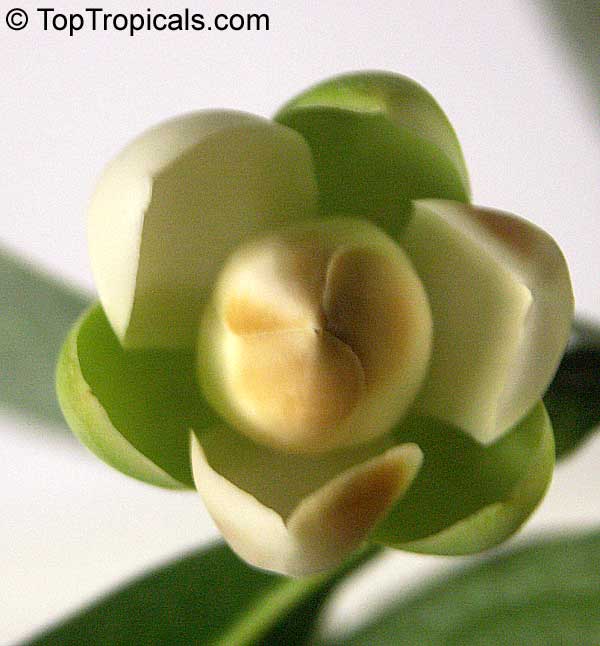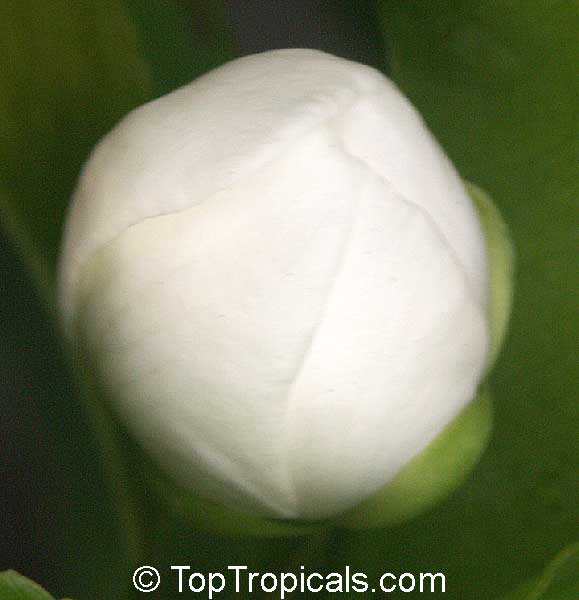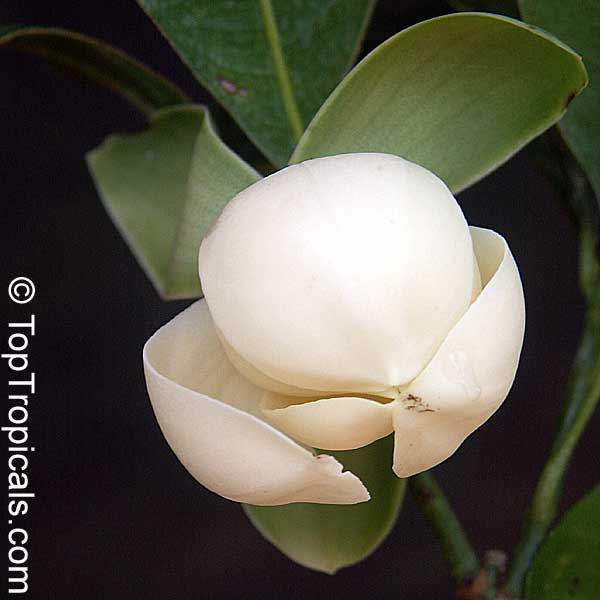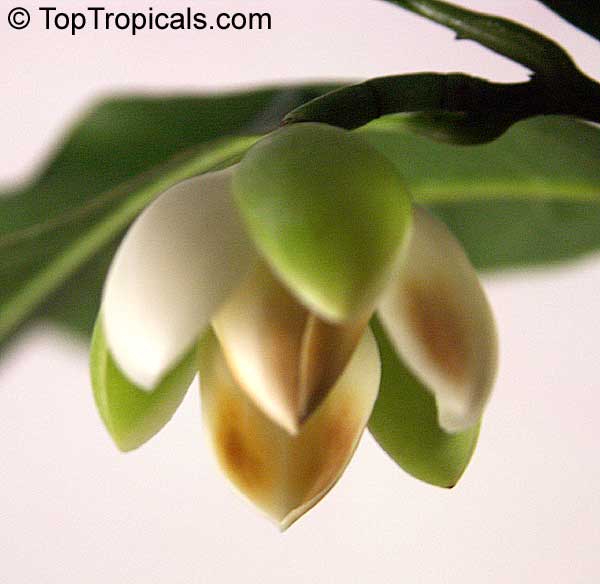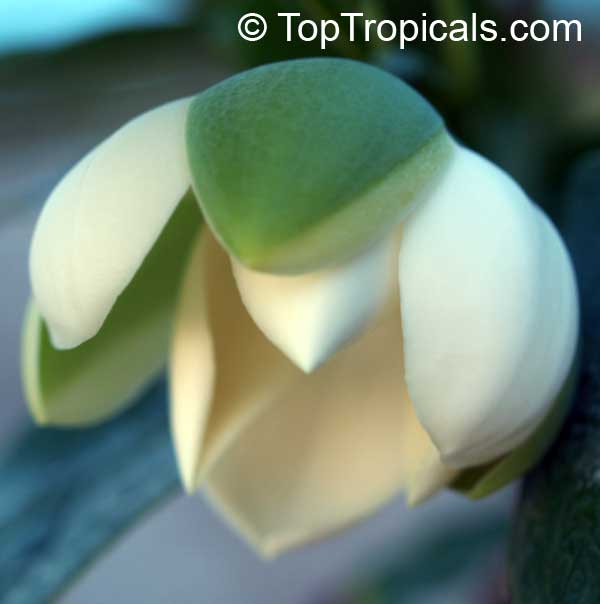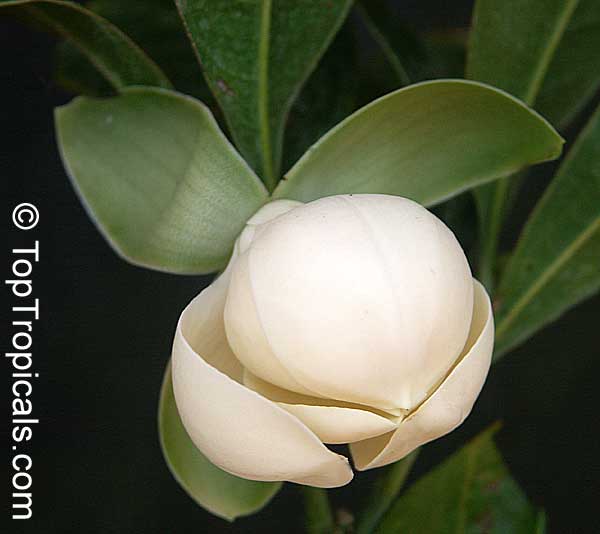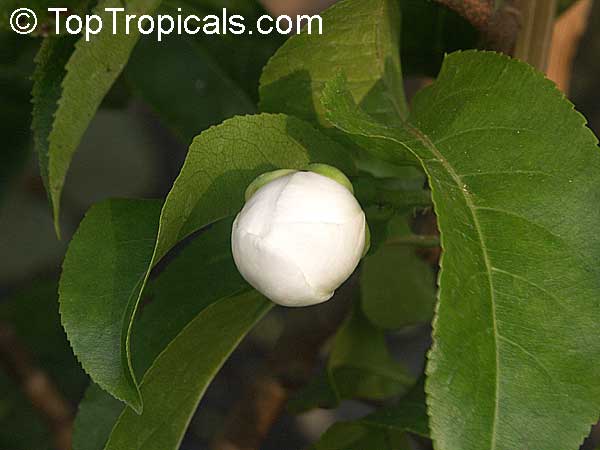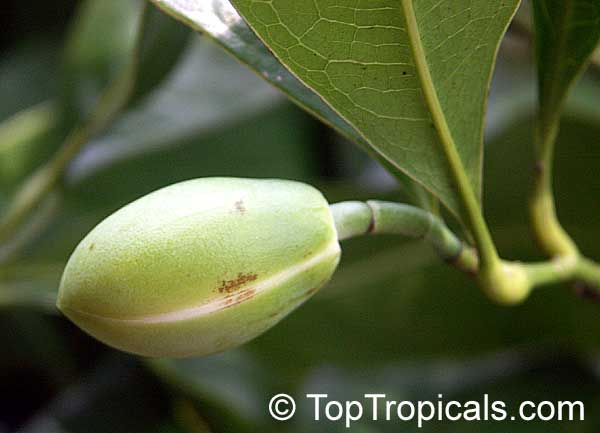Magnolia coco (Dwarf Magnolia)
Top Tropicals Plant Encyclopedia
Botanical names: Magnolia coco, Liriodendron coco, Magnolia pumila
Common names: Dwarf Magnolia, Cempaka Telur, Cempaka Gondok, Coconut Magnolia
Family: Magnoliaceae
Origin: China
Hardiness: 30°F






Magnolia coco was introduced into England in 1786 by Lady Amelia Hume. It has not proven hardy enough to widespread cultivation. The flowers are small and very fragrant. They usually last only a day and open in the evening, the tepals falling by morning. This species is a good houseplant, the most suitable magnolia for indoors, thanks to its small size and slow growth rate. Its long flowering period provides indoor fragrance and color about nine months of a year. Most of magnolias lack nectaries, but the Magnolia coco is a nice exception. It secrets a nectar-like substance at the base of the tepals and between the stigmas. Indoors it can be grown as a small house plant in a pot where it gets only 2-3 ft tall and blooms in young age. In habitat it ts a woody medium size shrub, 3-6ft. Flowers come in single, rounded as an egg before opening, 1-2" diameter with white petals and green sepal, intensely fragrant. Ideal for patios and small gardens. Fragrance is outstanding especially in early morning. Blooms from spring to fall. This plant grows better with less direct sunlight on lowlands. Requires regular watering in container. Can be grown indoors in a well-lit spot. Other names used incorrectly for this plant are Michelia coco and Michelia pumila, but this is a true magnolia. The blooms are at the ends of the branches, rather than from the leaf axils as they are in the Michelia group. M. lilliifera is similar to M. coco - as both species have those egg shaped flowerbuds. In M. coco however, the bud is shaped more like a baby coconut, hence the name Magnolia coco, Coconut Magnolia. Hardy to zones 9-10. This is a tropical plant. Min temp 45-50F, but it can survive light frost with some leaves damage (they get dry on edges from cold). If you want to have this plant nice looking year round, it is better to protect it - move inside while cold nights or weeks. It is easy since it is a dwarf plant and can be grown in a pot. However if you planted it in ground, it will be OK during mild winter, and new leaves will grow in spring. Does not require pruning since it is slow growing and has naturally bushy shape. Fertilize nce a month with bloom booster fertilizer during hot months. No pests noticed.
See Article about Tropical Magnolias.
See also Plants with scents as heady as incense: Enchanted Magnolias - Joy in your life...
Similar plants: Magnolia coco (Dwarf Magnolia)
- Magnolia acuminata (Cucumber Tree)
- Magnolia champaca (Joy Perfume Tree)
- Magnolia cylindrica (Huang-shan Magnolia )
- Magnolia delavayi (Chinese Evergreen Magnolia )
- Magnolia doltsopa (Sweet Michelia)
- Magnolia figo (Banana Magnolia)
- Magnolia floribunda (Magnolia)
- Magnolia grandiflora (Southern Magnolia)
- Magnolia kobus (Kobushi Magnolia)
- Magnolia lacei (White Michelia)
